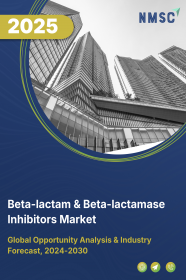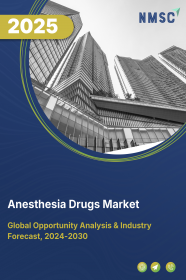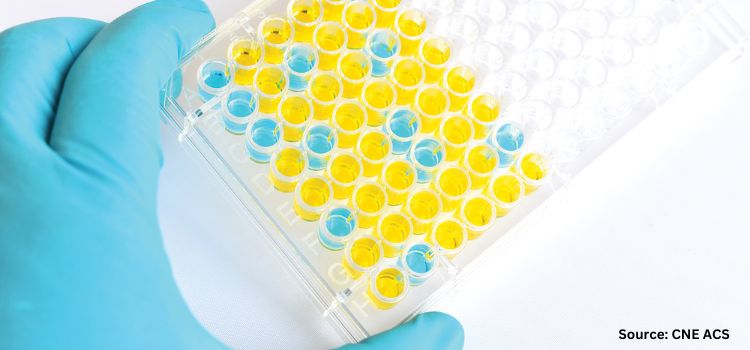
Beta-lactam and Beta-lactamase Inhibitors Market by Drug Class (Penicillin, Cephalosporin, Carbapenem, Monobactam, and Combination), by Disease (Urinary Tract Infection (excluding cUTI), Respiratory Infection, Skin Infection, Complicated Urinary Tract Infection (cUTI), Complicated Intra-Abdominal Infections (cIAI), Nosocomial Pneumonia, Blood Stream Infection, and Other), by Route of Administration (Oral, Intravenous, and others) - Global Opportunity Analysis and Industry Forecast, 2020 – 2030
Industry: Healthcare | Publish Date: 19-Mar-2025 | No of Pages: 506 | No. of Tables: 281 | No. of Figures: 251 | Format: PDF | Report Code : HC54
US Tariff Impact on Beta-lactam & Beta-lactamase Inhibitors Market
Trump Tariffs Are Reshaping Global Business
Market Definition:
At an estimated value of over 27.49 billion USD in 2019, the global Beta-lactam and Beta-lactamase market is predicted to thrive at a CAGR of 1.9% and valued at over USD 34.20 billion over the forecast year 2020-2030.
Beta-lactam inhibitors fall under a class of antibiotics that consists of all antibiotic agents that have a beta lactam ring embedded in their molecular structure. These antibiotic agents helps fight against bacterial infections and protozoa infections. The antibiotic agent either completely kills the bacteria or prevents it from growing and expanding. Names of some beta-lactam antibiotics are penicillin, cephalosporin and many others. On the other hand, beta-lactamase inhibitors are a class of drugs that block the activity of beta-lactamase enzymes and restricts the degradation of beta-lactam. Beta-lactamase enzymes are created either constitutively or on exposure to antimicrobials.
Market Dynamics and Trends:
The widespread presence of infectious diseases along with the growth in consumption of identical drugs in developing countries indicate the growth of beta-lactam and beta-lactamase inhibitors market. Recent improvements in the healthcare sector and advancement of medical technology have further contributed to this market growth. The surge in number of clinical trials of such drugs have further augmented the growth of the market. However, evolution of antibiotic resistance and misuse due to over the counter availability are expected to impede the growth of beta-lactam and beta-lactamase Inhibitors market. Contradictorily, discovery of advanced prospect molecules and novel combination therapies are anticipated to offer significant opportunities to the market players and hence increase their beta-lactam and beta-lactamase inhibitors market share.
Market Segmentations and Scope of the Study:
The global beta-lactam and beta-lactamase inhibitors market share has been segmented on the basis of drug class, disease, route of administration and geography. On the basis of drug class, the market is categorized into Penicillin, Cephalosporin, Carbapanem, Monobactam and combination. Combination is sub segmented into Penicillin/Beta Lactamase inhibitors, Cephalosprin/Beta Lactamase inhibitors and Carbapanem/Beta inhibitors. On the basis of disease, the market is segmented into Urinary Tract Infection (excluding cUTI), Respiratory Infection, Skin Infection, Complicated Urinary Tract Infection (cUTI), Complicated Intra-Abdominal Infections (cIAI), Nosocomial Pneumonia, Blood Stream Infection and others. Nosocomial Pneumonia is sub segmented into Hospital Acquired Pneumonia, Ventilator Associated Pneumonia and other. Based on route of administration, the market is segmented into oral, intravenous and others. In terms of geography, the market is categorized into North America, Europe, Asia Pacific and RoW.
Geographical Analysis:
The North America region is anticipated to hold the major market share as a result of advanced health care facilities and infrastructure in conjunction with rise in acceptance of beta-lactam and beta-lactamase inhibitors.
The Asia Pacific region is predicted to show rapid and consistent growth in market share within the forecast period. This region also indicates increased prevalence of infectious diseases in addition to rise in consumption of such drugs, which also serves as favorable factor for the beta-lactam and beta-lactamase inhibitor market.
Competitive Landscape:
Lucrative growth opportunities makes the Beta-lactam and Beta-lactamase inhibitors market extremely competitive. Some of the major players in the market include Abbott Laboratories, Allergan plc. F. Hoffmann-La Roche Ltd., GlaxoSmithKline plc., Merck & Co. Inc. Mylan N.V., Novartis International AG, Pfizer Inc., Sanofi, Teva Pharmaceutical Industries and more. A number of developmental strategies have been adopted by companies in the recent years to further promote the growth of the market. For instance, in 2019 Cipla gained rights to novel and patented its anti-infective called Elores. Also, In July 2019, imipenem-cilastatin-relebactam was also approved by the FDA for treating cUTIs and cIAIs.
Key Benefits:
-
The Beta-lactam and Beta-lactamase Inhibitor market report provides the quantitative analysis of the current market and estimations through 2020-2030 that assists in identifying the prevailing market opportunities to capitalize on
-
The study comprises a deep dive analysis of the Beta-lactam and Beta-lactamase Inhibitor market trend including the current and future trends for depicting the prevalent investment pockets in the market
-
The information related to key drivers, restraints and opportunities and their impact on the Beta-lactam and Beta-Lactamase Inhibitor market is provided in the report.
-
The market share of the players in the global Beta-lactam and Beta-lactamase Inhibitor market along with their competitive analysis.
-
Value chain analysis in the market study provides a clear picture of the stakeholders’ roles
Key Market Segments:
By Drug Class
-
Penicillin
-
Cephalosporin
-
Carbapenem
-
Monobactam
-
Combination
-
Penicillin/Beta Lactamase Inhibitor
-
Cephalosporin/Beta Lactamase Inhibitor
-
Carpabenem/Beta Lactamase Inhibitor
-
By Disease
-
Urinary Tract Infection
-
Respiratory Infection
-
Skin Infection
-
Complicated Urinary Tract Infection
-
Complicated Intra-Abdominal Infection
-
Nosocomial Pneumonia
-
Hospital Acquired Pneumonia
-
Ventilator Associated Pneumonia
-
Other Nosocomial Pneumonia
-
-
Blood Stream Infection
-
Other Infection
By Route of Administration
-
Oral
-
Intravenous
-
Other Routes
By Geography
-
North America
-
Canada
-
U.S.
-
Mexico
-
-
Europe
-
Germany
-
France
-
Spain
-
Italy
-
UK
-
Rest of Europe
-
-
Asia-Pacific
-
Japan
-
India
-
China
-
South Korea
-
Indonesia
-
Thailand
-
Vietnam
-
Taiwan
-
Rest of Asia-Pacific
-
-
RoW
-
Saudi Arabia
-
Brazil
-
Remaining Countries
-
Key Players:
-
Allergan Plc.
-
Abbott Laboratories
-
GlaxoSmithKline plc
-
F. Hoffmann-La Roche Ltd.
-
Mylan N.V.
-
Merck & Co. Inc.
-
Pfizer Inc.
-
Novartis International AG (Sandoz)
-
Teva Pharmaceutical Industries Ltd.
-
Sanofi
REPORT SCOPE AND SEGMENTATION:
|
Parameters |
Details |
|
Analysis Period |
2019–2030 |
|
Base Year Considered |
2020 |
|
Forecast Period |
2020–2030 |
|
Market Size Estimation |
Billion (USD) |
|
Market Segmentation |
By Drug Class (Penicillin, Cephalosporin, Carbapenem, Monobactam, Combination) By Disease (Urinary Tract Infection, Respiratory Infection, Skin Infection, Complicated Urinary Tract Infection, Complicated Intra-Abdominal Infections, Nosocomial Pneumonia, Blood Stream Infection, Other Diseases) By Route of Administration (Oral, Intravenous, Other Route of Administration) |
|
Geographical Segmentation |
North America (U.S., Canada, Mexico) Europe (Germany, UK, Spain, France, Italy, Rest of Europe), Asia-Pacific (Indonesia, China, India, Japan, South Korea, Thailand, Vietnam, Taiwan, Rest of APAC) Rest of World (Brazil, Saudi Arabia, Remaining Countries) |
|
Companies Profiled |
Allergan Plc., Abbott Laboratories, GlaxoSmithKline plc, F. Hoffmann-La Roche Ltd., Mylan N.V., Merck & Co. Inc., Pfizer Inc., Novartis International AG (Sandoz), Teva Pharmaceutical Industries Ltd., Sanofi. |

















 Speak to Our Analyst
Speak to Our Analyst





















